Hurricane Nigel expected to ‘rapidly intensify’ and become major storm by Tuesday: Latest tracker
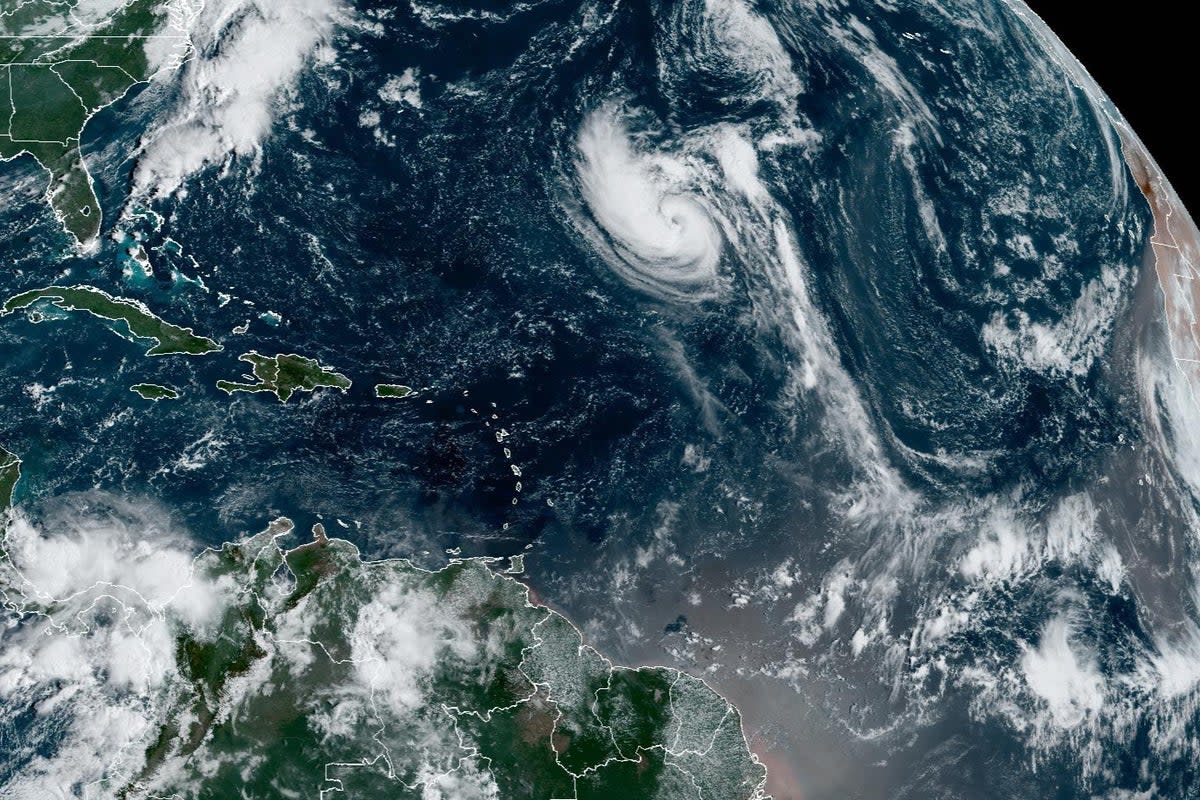
Hurricane Nigel has strengthened slightly overnight and is set to intensify further, according to the latest advisory from the National Hurricane Center.
Nigel, the sixth hurricane to form in the Atlantic Ocean this season, developed into a Category 1 storm yesterday and was forecast to “rapidly intensify” to become a Category 3 hurricane.
At the moment, Nigel has sustained winds of 80mph (130kph) but forecasters in the National Weather Service (NWS) and National Hurricane Center expect the storm to have sustained winds of at least 111mph as it grows.
Nigel was located approximately about 875miles (1,410km) east-southeast of Bermuda and was moving northwest at a speed of 12mph (19kph).
The hurricane is not expected to make landfall and no warnings or watches have been issued.
As of now, the National Hurricane Center predicts Nigel will veer off right into the open Atlantic Ocean by Wednesday morning.
Nigel developed shortly after Hurricane Lee landed in Nova Scotia as a post-tropical storm.
Key Points
National Hurricane Center expects Hurricane Nigel to ‘rapidly intensify’
Hurricane Nigel’s expected path
Spaghetti models of Hurricane Nigel
Why are so many hurricanes ‘rapidly intensifying’ ?
Motorist killed after storm Lee makes landfall
Sunday 17 September 2023 05:49 , Alisha Rahaman Sarkar
A 51-year-old motorist in Searsport, Maine, died after a large tree limb fell on his vehicle Saturday on US Highway 1 during a period of high winds, the first fatality attributed to the storm.
The tree limb brought down live power lines, and utility workers had to cut power before the man could be removed, said Police chief Brian Lunt. The unidentified man died later at a hospital, he said.
Strong winds batter Nova Scotia
Sunday 17 September 2023 06:30 , Alisha Rahaman Sarkar
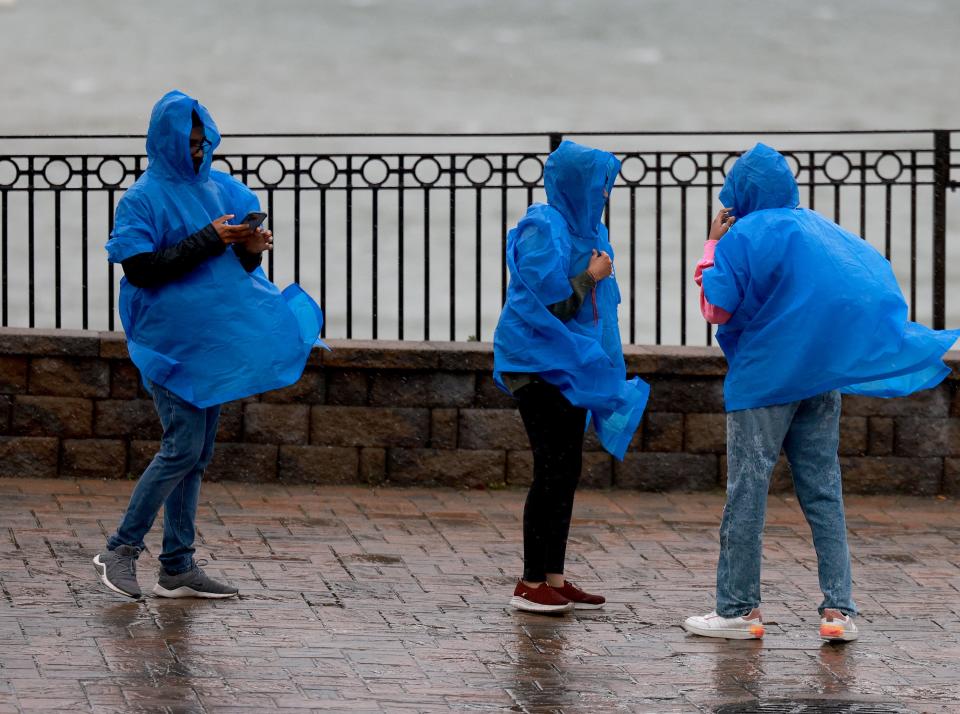
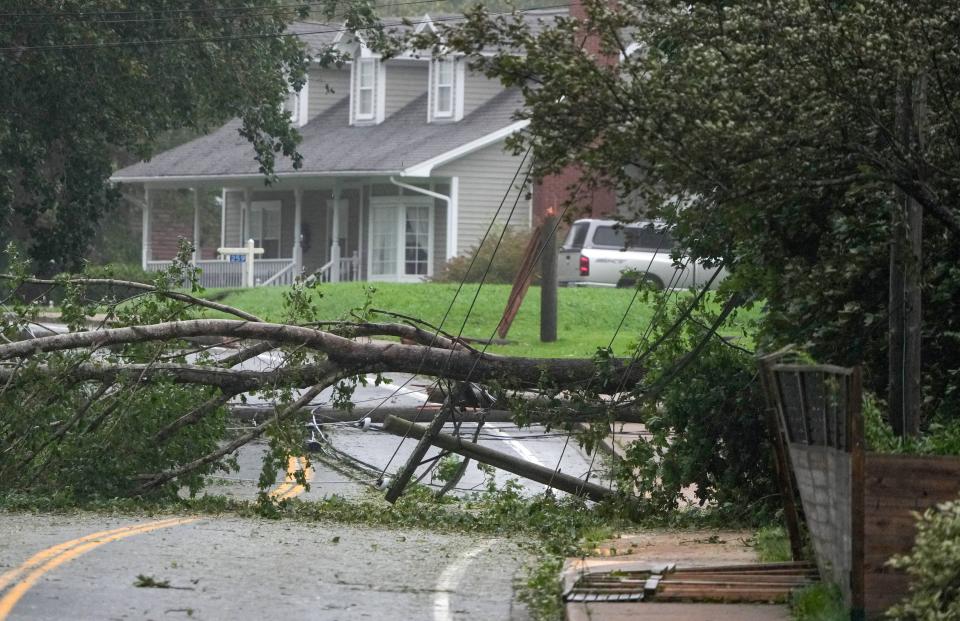
Thousands left without power and flights cancelled as Lee makes landfall
Sunday 17 September 2023 07:30 , Alisha Rahaman Sarkar
Thousands of people were left without power as storm Lee made landfall in Nova Scotia, flooding roads and fanning anxiety in a region still reeling from wildfires and severe flooding this summer.
The province's largest airport, Halifax Stanfield International, cancelled all flights.
"People are exhausted. ... It's so much in such a small time period," said Pam Lovelace, a councilor in Halifax.
The storm was so big that it caused power outages several hundred miles from its center. At midday Saturday, 11 per cent of electricity customers in Maine lacked power, along with 27 per cent of Nova Scotia, 8 per cent of New Brunswick and 3 per cent of Prince Edward Island.
Hurricane-force winds extended as far as 140 miles from Lee's center, with tropical storm-force winds extending as far as 320 miles — enough to cover all of Maine and much of Maritime Canada.
Climate change could bring more monster storms to New England
Sunday 17 September 2023 08:30 , Alisha Rahaman Sarkar
When it comes to hurricanes, New England can’t compete with Florida or the Caribbean.
But scientists said Friday the arrival of storms like Hurricane Lee this weekend could become more common in the region as the planet warms, including in places such as the Gulf of Maine.
One recent study found climate change could result in hurricanes expanding their reach more often into mid-latitude regions, which include New York, Boston and even Beijing.
The study says the factors include warmer sea surface temperatures in these regions and the shifting and weakening of the jet streams, which are the strong bands of air currents encircling the planet in both hemispheres.
More here.
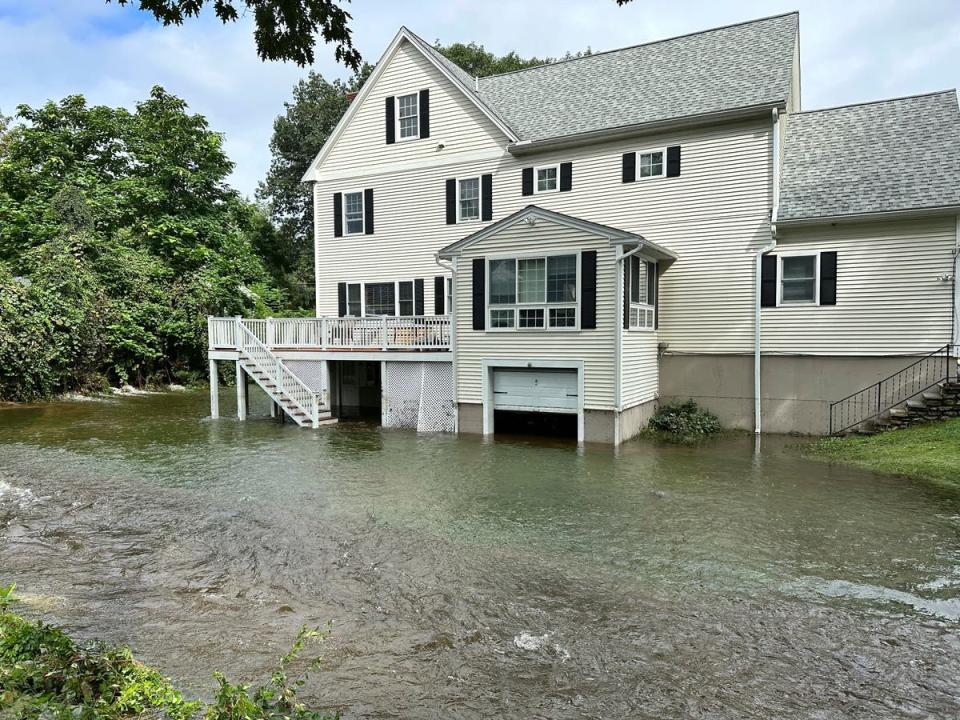
Climate change could bring more monster storms like Hurricane Lee to New England
Republican representative survives after boat incident
Sunday 17 September 2023 09:30 , Alisha Rahaman Sarkar
Billy Bob Faulkingham, House Republican leader of the Maine Legislature, and another lobsterman survived after their boat overturned while hauling traps ahead of the storm, officials said.
The boat’s emergency locator beacon alerted authorities, and the two clung to the hull until help arrived, said Winter Harbor Police chief Danny Mitchell. The 42-foot boat sank.“They’re very lucky to be alive,” Mr Mitchell said.
Forecasters urged residents to stay home, but many ventured out anyway.
Betsy Follansbee and her husband, Fred, jogged to Higgins Beach in Scarborough, Maine, to watch surfers — some wearing helmets — paddling out to catch waves reaching 12 feet.
They were the biggest waves Follansbee has seen in her 10 years living there, she said.“We’re impressed that they’re bold enough to try,” Ms Follansbee said.
Teenager drowns ahead of Lee landfall
Sunday 17 September 2023 10:30 , Alisha Rahaman Sarkar
A teenager drowned while in rough waters of the Atlantic on Wednesday, authorities in Florida said.
The 15-year-old was with two other people when he fell off a raft, Fernandina Beach Police Department told Fox Weather.
The other two were brought back to the shore and rushed to a local medical centre while authorities searched for the missing teen.
The group had ventured into the ocean despite multiple red flags warnings about the rough waters ahead of storm Lee’s landfall.
Hurricane Lee makes landfall in Nova Scotia
Sunday 17 September 2023 11:30 , Alisha Rahaman Sarkar
Hurricane Lee made landfall in Western Novia Scotia on Saturday, as millions in New England and Canada have been preparing for its devastation.
Maximum sustained winds were at 70mph, as of 4pm when the storm reached land about 50 miles from Eastport, Maine and about 135 miles from Halifax, Nova Scotia, according to the National Hurricane Center.
More here.
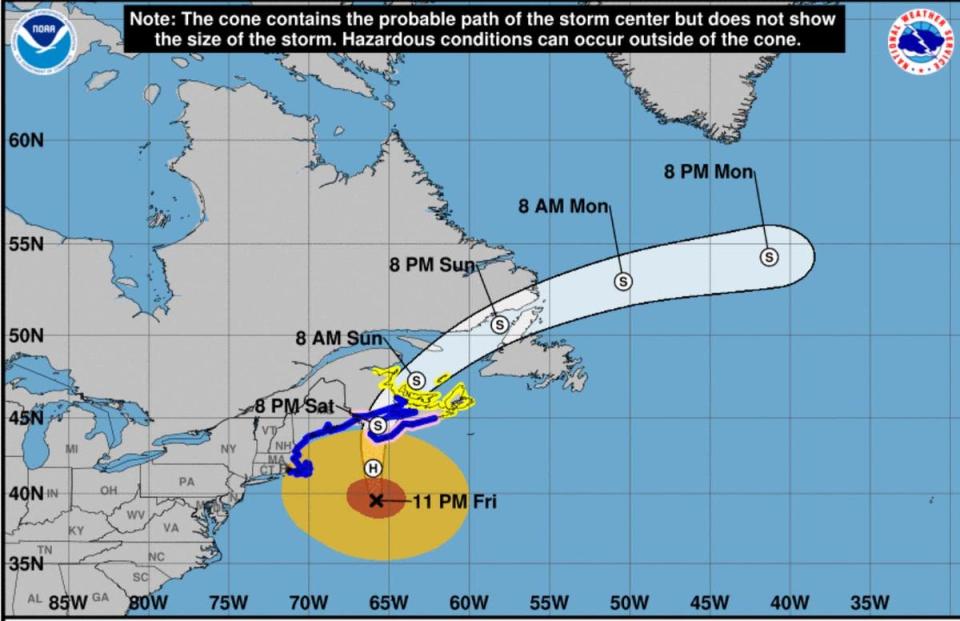
Storm Lee continues to move north
Sunday 17 September 2023 12:30 , Alisha Rahaman Sarkar
Heavy downpour is expected to continue through Sunday in the Prince Edward Island province of Canada, the forecasters said.
Storm Lee made landfall in far western Nova Scotia, with winds whipping at 70mph, which killed one person and left thousands without electricity.
Lee is on track to turn northeast and pass over Saturday night into Sunday, the Canadian Broadcasting Corporation reported.
Nearly 144,000 left without power in Nova Scotia
Sunday 17 September 2023 13:30 , Alisha Rahaman Sarkar
About 144,000 people were without power on Saturday after strong winds due to storm Lee downed trees. In neighboring New Brunswick, 37,000 people had no electricity.
“Crews have been able to restore power to some customers ... however, conditions are getting worse,” Matt Drover of the Nova Scotia electric utility told Reuters.
“In many cases, especially when winds are above 80 kmph, it isn’t safe for our crews.”
In a social media post, Nova Scotia police said they had received reports of drivers heading to the coast to watch the waves, which they said was dangerous.
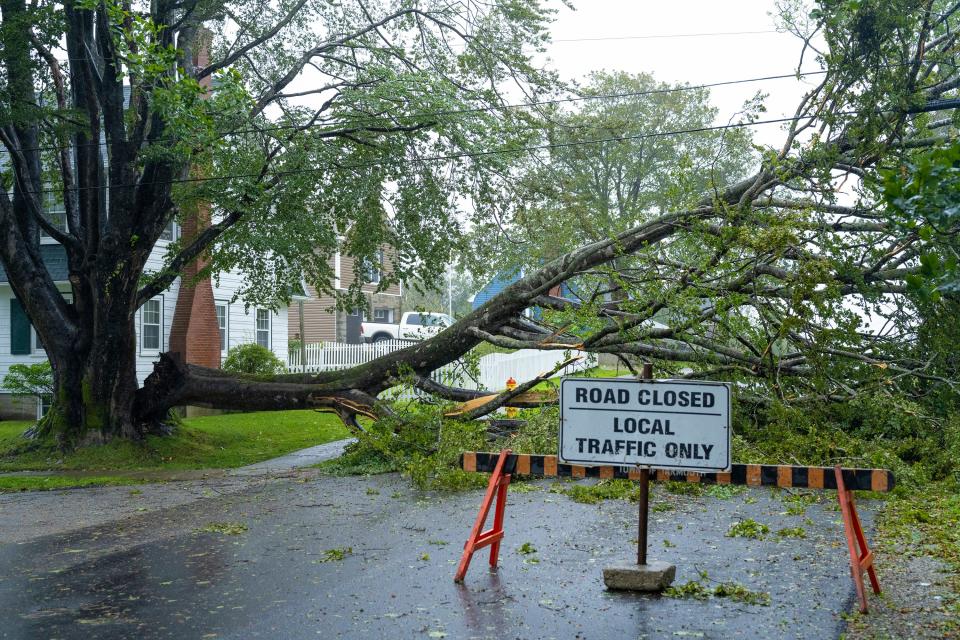
Warnings called off in parts of US and Canada
Sunday 17 September 2023 14:30 , Alisha Rahaman Sarkar
Post-tropical cyclone Lee made landfall at near-hurricane strength Saturday, bringing destructive winds, rough surf and torrential rains to New England and Maritime Canada.
But officials withdrew some warnings for the region late Saturday night.
The US National Hurricane Center discontinued a tropical storm warning for the coast of Maine, while Environment Canada ended its tropical storm warning in New Brunswick.
A tropical storm warning remained in effect for parts of New Brunswick, Nova Scotia, Prince Edward Island and the Magdalen Islands.
Sunday 17 September 2023 15:00 , Kelly Rissman
“Gusty Winds” in Atlantic Canada as Lee rages on
An 8am advisory from the National Hurricane Center located the storm as about 70 miles from Charlottetown, Prince Edward Island with winds whipping at 45mph.
A faster “northeastward motion is expected over the next couple of days, taking Lee over Newfoundland this afternoon and over the Atlantic waters by early Monday,” according to the hurricane center.
The storm is expected to gradually weaken over the next couple of days, and “Lee could dissipate on Tuesday.”
Sunday 17 September 2023 15:30 , Kelly Rissman
A look at the life cycle of Lee
16 days of the life of #Lee:
Chapter 1: African easterly wave → sudden intensification into Category 5 #hurricane
Chapter 2: Eyewall replacements and restrengthening
Chapter 3: Expansion, post-tropical transition, and landfall in Canada#meteorology pic.twitter.com/daWeZEC5Sk— Stu Ostro (@StuOstro) September 17, 2023
Sunday 17 September 2023 16:00 , Kelly Rissman
National Hurricane Center’s Watches and Warnings in Effect:
A Tropical Storm Warning is in effect for...
Nova Scotia from Lismore eastward to Point Aconi and southwestward to east of Porters Lake
Prince Edward Island from Savage Harbor eastward to east of Wood Islands
Magdalen Islands
Sunday 17 September 2023 16:30 , Kelly Rissman
Power outages in Maine
A large chunk of the state’s residents — 42,000 to be exact — are without power as of Sunday morning, according to Poweroutage.us. That number is down from yesterday when nearly 60,000 locals had reported outages.
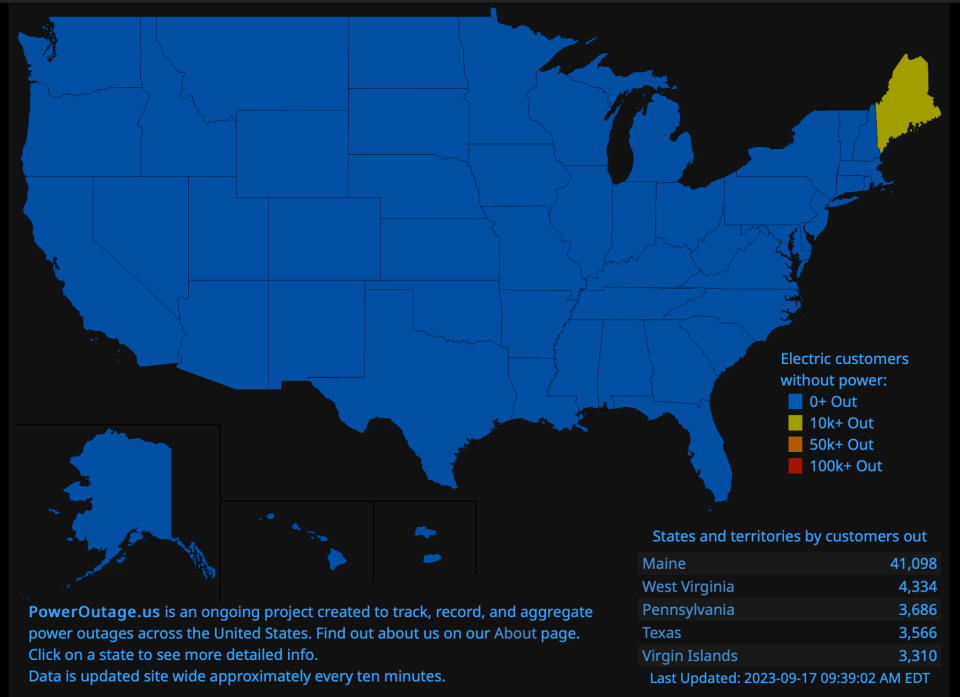
Sunday 17 September 2023 17:00 , Kelly Rissman
National Hurricane Center issues last advisory
All tropical storm warnings for Canada are discontinued, the hurricane center wrote.
As of 11am, Lee is 135 miles from Port Aux Basques, Newfoundland, with winds moving at 45mph. The storm is expected to head over Newfoundland later today and over the Atlantic waters by early Monday, the center wrote.
Wind gusts up to “near gale force” are still possible over portions of Atlantic Canada today, the National Hurricane Center wrote.
Sunday 17 September 2023 17:30 , Kelly Rissman
Thousands are without power in Nova Scotia, as workers try to restore it as soon as possible
Work continues this afternoon as our crews respond to damage caused by Post Tropical Storm Lee.
Significant winds impacted the province for almost 24-hours, with winds reaching over 90km an hour in most areas. Limbs and branches have come down onto power lines, and in some cases… pic.twitter.com/gPs4MYByNz— Nova Scotia Power (@nspowerinc) September 17, 2023
Sunday 17 September 2023 18:00 , Kelly Rissman
Meteorologist captures Lee’s effects in Nova Scotia
Scenes of monster waves and surf at Peggy’s Cove lighthouse last night in the wake of Post-tropical Cyclone Lee in Nova Scotia. Huge wind field is the signature of this storm. Today, we will be documenting the effects of the coastal erosion, since it is too expensive to fly out… pic.twitter.com/0xDQtBPOF7
— Reed Timmer, PhD (@ReedTimmerAccu) September 17, 2023
Sunday 17 September 2023 18:30 , Kelly Rissman
Canada’s hurricane center forecasts Lee’s path
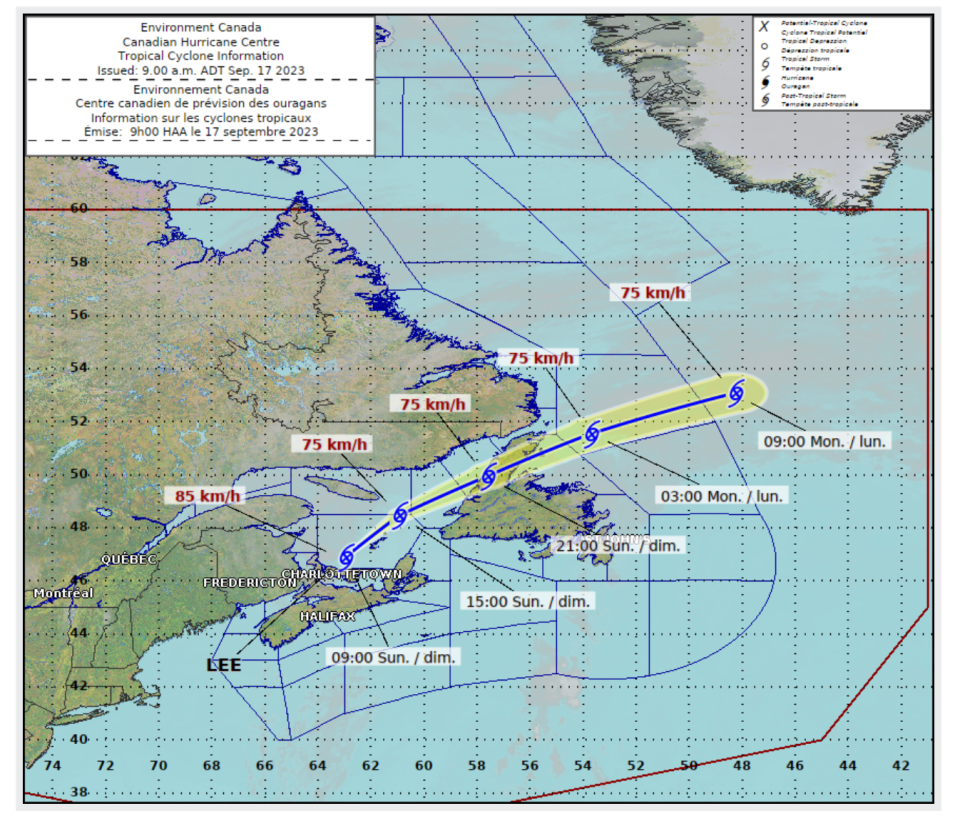
Sunday 17 September 2023 19:00 , Kelly Rissman
Post-tropical cyclone Lee has taken at least one life
A 51-year-old motorist in Searsport, Maine, was killed after the gusts caused a large tree limb to topple onto his vehicle on Saturday on US Highway 1.
The tree limb also brought down live power lines, meaning utility workers had to cut power before the man could be removed, police chief Brian Lunt said. The 51-year-old later died at a hospital, the chief said.
Read more on the aftermath of the storm here.
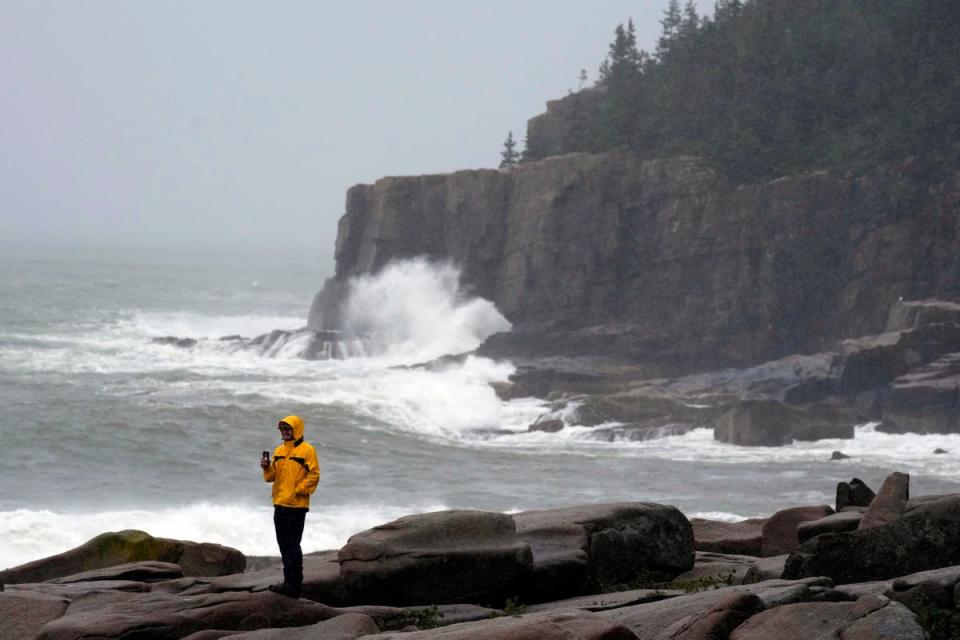
Motorist dies after tree limb falls on vehicle as Lee batters New England and Canada
Sunday 17 September 2023 19:30 , Kelly Rissman
Leader of Canada’s New Democratic Party offers support for those affected by Lee
My thoughts are with all of the Maritimers who are being impacted by Hurricane Lee today. You’ve gone through so much in recent months with the floods, forest fires and now a hurricane.
Canadians have your back. Stay safe and listen to advice from local authorities.— Jagmeet Singh (@theJagmeetSingh) September 16, 2023
Sunday 17 September 2023 20:00 , Kelly Rissman
Climate change could bring more monster storms to New England
When it comes to hurricanes, New England can’t compete with Florida or the Caribbean.
But scientists said Friday the arrival of storms like Hurricane Lee this weekend could become more common in the region as the planet warms, including in places such as the Gulf of Maine.
One recent study found climate change could result in hurricanes expanding their reach more often into mid-latitude regions, which include New York, Boston and even Beijing.
The study says the factors include warmer sea surface temperatures in these regions and the shifting and weakening of the jet streams, which are the strong bands of air currents encircling the planet in both hemispheres.
More here.

Climate change could bring more monster storms like Hurricane Lee to New England
Sunday 17 September 2023 20:30 , Kelly Rissman
Some advice from FEMA
Hurricane #Lee brought damages to some areas. For your safety avoid power or utility lines — they can still be electrified.
📲 If you see a downed power line or other electrical hazard, report them immediately to your power or utility company. pic.twitter.com/pbw6DHR9tD— FEMA (@fema) September 17, 2023
Sunday 17 September 2023 21:00 , Kelly Rissman
Canada’s hurricane center gives an update
The remnant low from Lee is crossing the Gulf of St. Lawrence today.
The current central pressure is estimated at 989 millibars. Conditions continue to improve in many areas of Nova Scotia and southern New Brunswick.

Sunday 17 September 2023 21:30 , Kelly Rissman
Post-tropical storm Lee is crossing Eastern Quebec
According to Canada’s hurricane center, Lee will result in about 1 to 4 inches of rain, which is expected to stop this evening.
“Heavy downpours can cause flash floods and water pooling on roads. Localized flooding in low-lying areas is possible. Watch for possible washouts near rivers, creeks and culverts,” the center wrote.
Sunday 17 September 2023 22:00 , Kelly Rissman
Post-tropical cyclone Lee has taken at least one life
A 51-year-old motorist in Searsport, Maine, was killed after the gusts caused a large tree limb to topple onto his vehicle on Saturday on US Highway 1.
The tree limb also brought down live power lines, meaning utility workers had to cut power before the man could be removed, police chief Brian Lunt said. The 51-year-old later died at a hospital, the chief said.
Read more on the aftermath of the storm here.

Motorist dies after tree limb falls on vehicle as Lee batters New England and Canada
Sunday 17 September 2023 22:30 , Kelly Rissman
Canada’s hurricane center afternoon update:
Post-tropical storm Lee is currently affecting the Lower North Shore. It will give total rainfall amounts of 30 to 50 millimetres.
Rain will end this evening. Heavy downpours can cause flash floods and water pooling on roads.
Localized flooding in low-lying areas is possible.
Watch for possible washouts near rivers, creeks and culverts.
Sunday 17 September 2023 23:30 , Kelly Rissman
Power restored
The power outages in Maine have dwindled down to only 11,000 customers.
Earlier on Sunday, a whopping 42,000 had been impacted by knocked-down power lines, caused by storm Lee.
Similarly, fewer than 2,000 outages were reported in Nova Scotia late Sunday afternoon.
Monday 18 September 2023 00:30 , Kelly Rissman
What to expect over the next few days...
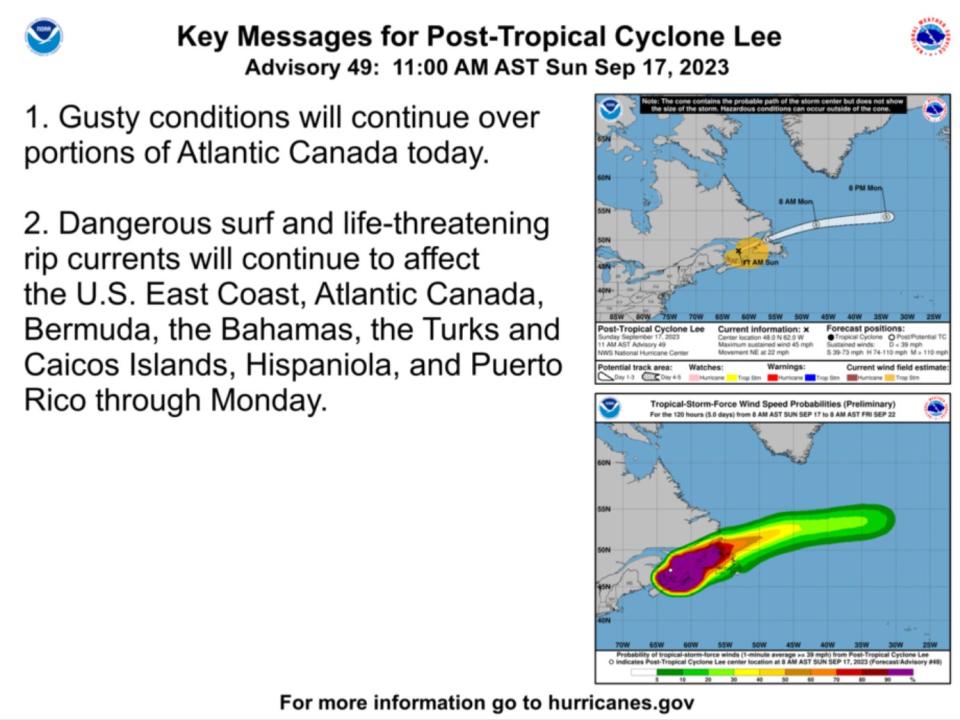
Monday 18 September 2023 01:30 , Kelly Rissman
Maine is “back to life” after the storm
What a difference 24 hours makes…
Bar Harbor, Maine fully back to life after #Lee. You can tell this is an area used to storms, they barely even flinched https://t.co/CC1OlBbYs0— Marissa Parra NBC (@MarParNews) September 17, 2023
Monday 18 September 2023 02:30 , Kelly Rissman
“What a difference a day makes”
Many have taken to social media to highlight the contrast from before and after the storm.
Here is a pano of the beautiful rocky coastline of southern Nova Scotia. What a difference a day makes! #Lee https://t.co/3RiWpRVuz4
— Reed Timmer, PhD (@ReedTimmerAccu) September 17, 2023
Monday 18 September 2023 03:30 , Kelly Rissman
Canada’s hurricane center forecasted Lee’s path

Monday 18 September 2023 04:30 , Kelly Rissman
Both the US and Canadian hurricane centers issued their final advisories for Lee
The National Hurricane center issued its final advisory this morning at 11am, while Environment Canada issued its final advisory at 4pm.
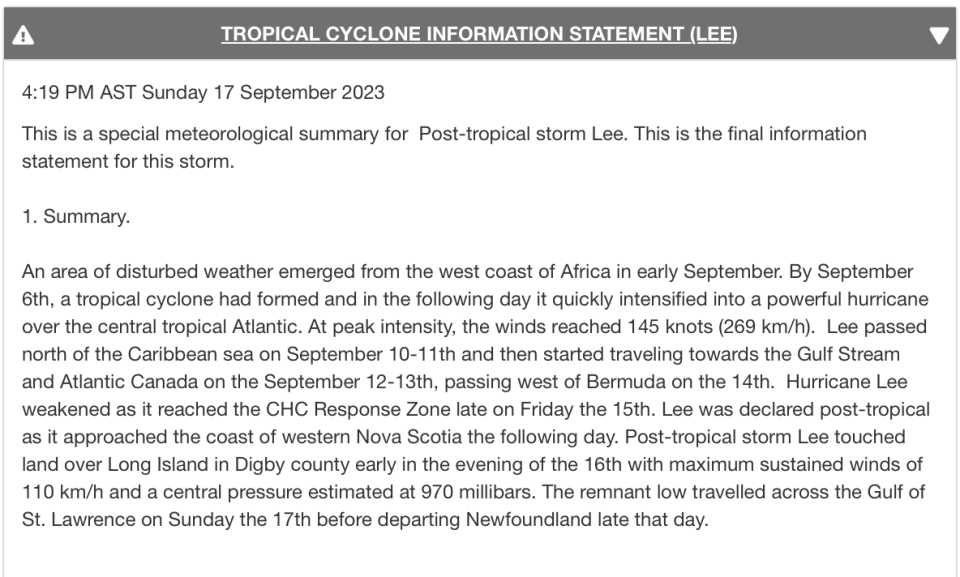
Monday 18 September 2023 05:00 , Kelly Rissman
The Timeline of Storm Lee
In its final advisory about the storm, Environment Canada provided a summary of the storm’s path. Here’s the timeline:
6 September: a tropical cyclone formed
7 September: the storm intensified into a hurricane
10-11 September: Lee passed north of the Caribbean sea
12-13 September: the storm began moving towards the Gulf Stream and Atlantic Canada
14 September: the storm passed just west of Bermuda
15 September: Hurricane Lee was downgraded
16 September: Post-tropical storm Lee made landfall in Nova Scotia
Where is Hurricane Nigel?
Monday 18 September 2023 14:56 , Ariana Baio
Hurricane Nigel, the sixth hurricane to form in the Atlantic Ocean this season, is located in the middle of the Atlantic as of Monday morning.
The Category 1 hurricane is approximately 935 miles from Bermuda near the latitude 26.5 North and longitude 50.7 West.
As of now, Hurricane Nigel is not expected to land anywhere as forecasters believe it will turn right and head into the middle of the ocean by Wednesday.
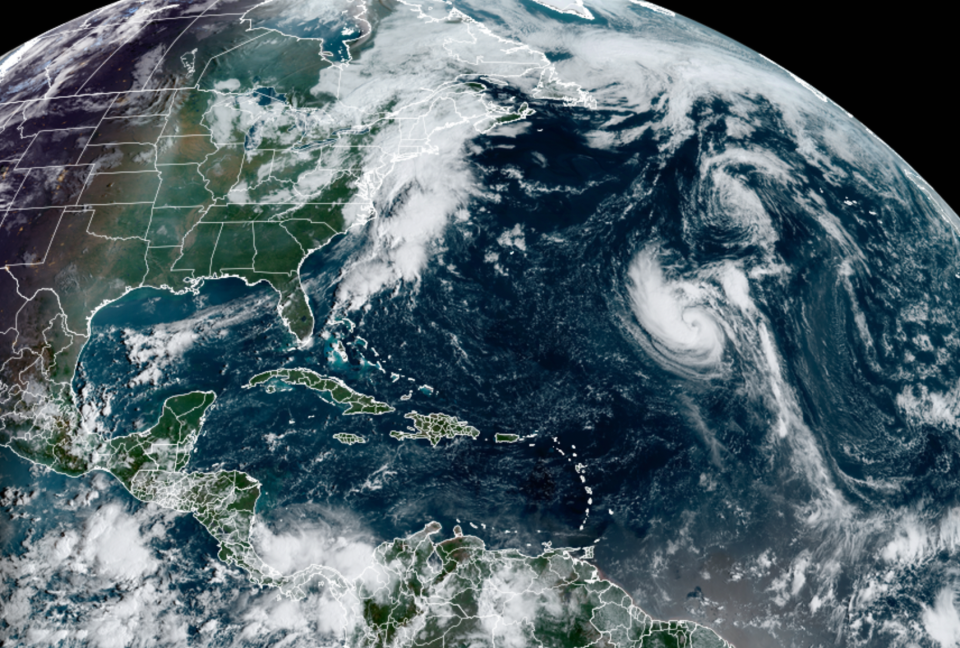
National Hurricane Center expects Hurricane Nigel to ‘rapidly intensify’
Monday 18 September 2023 15:15 , Ariana Baio
Hurricane #Nigel Advisory 12: Nigel Forecast to Rapidly Intensify Into a Major Hurricane On Tuesday. https://t.co/tW4KeGe9uJ
— National Hurricane Center (@NHC_Atlantic) September 18, 2023
Hurricane Nigel’s expected path
Monday 18 September 2023 15:30 , Ariana Baio
Forecasters in the National Hurricane Center do not predict that Hurricane Nigel will make landfall anywhere.
As of Monday morning, Hurricane Nigel will continue moving northwesterly then veer right on Wednesday morning – heading back into the middle of the Atlantic Ocean.
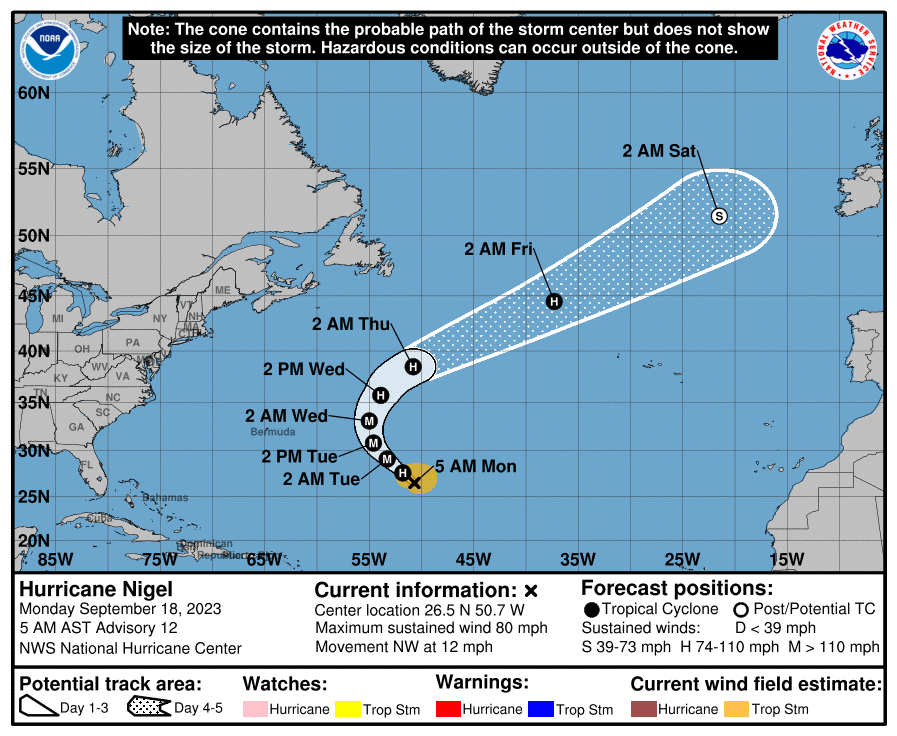
Why are so many hurricanes ‘rapidly intensifying’
Monday 18 September 2023 15:58 , Ariana Baio
When a hurricane, goes from a Category 1 storm to a Category 3 within two days it is considered “rapidly intensifying” – the same prediction given to Hurricane Nigel.
The National Hurricane Center (NHC) defines rapid intensification where a storm’s maximum sustained winds jump 35 miles per hour (56 kph) in less than 24 hours.
These storms can become extremely dangerous as they approach coastlines because they give residents little time to prepare and evacuate. They are the most costly and a great threat to human life. They are also becoming more common.
In the past 32 years, most Category 3 or higher hurricanes have undergone rapid intensification, according to a 2022 study.
This is due to warmer ocean waters, more moisture in the atmosphere and low vertical wind shear, Philip Klotzbach of Colorado State University told Science News.
Vertical wind shear happens when winds at different heights move at different speeds in different directions. These can assist in a storm’s intensification by pulling heat and moisture across the upper structure of the storm.
But warming ocean temperatures are a major factor in helping boost storms’ size and speed. As the Earth becomes warmer, ocean temperatures rise and contribute to fueling hurricanes.
Spaghetti models of Hurricane Nigel
Monday 18 September 2023 16:21 , Ariana Baio
The spaghetti models of Hurricane Nigel show the Category 1 storm making a right and veering off into the Atlantic Ocean as of Wednesday.
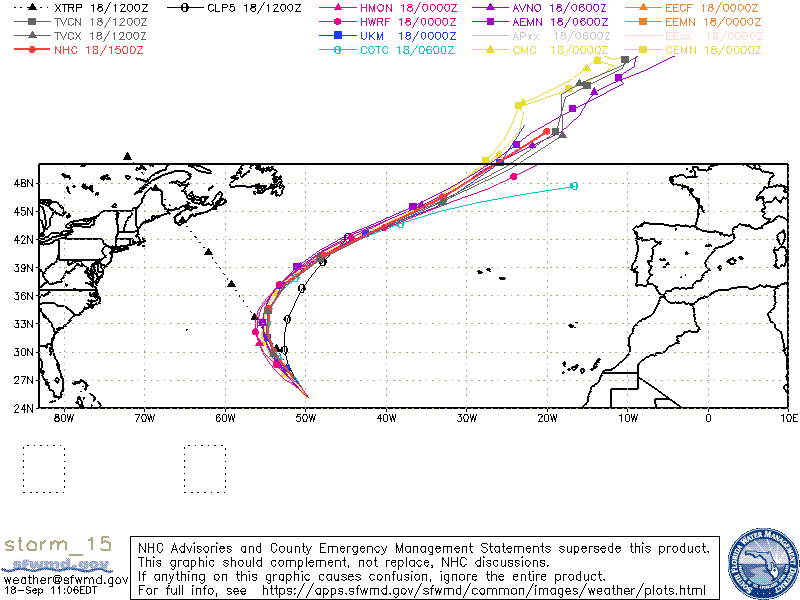
What names are left on the Atlantic hurricane season?
Monday 18 September 2023 17:00 , Ariana Baio
So far, 14 names of the 21 allocated for the 2023 Atlantic hurricane season have been used.
Nigel is the latest to be used for the Category 1 storm brewing in the middle of the Atlantic Ocean. There are seven other names to be used for storms until the end of hurricane season at the end of November.
After Nigel, the names that can be used are: Ophelia, Philippe, Rina, Sean, Tammy, Vince and Whitney.
Atlantic hurricane season runs from 1 June until 30 November. Peak hurricane season is typically in mid-September when temperatures in the ocean are at their warmest.
Current systems in Atlantic
Monday 18 September 2023 17:25 , Ariana Baio
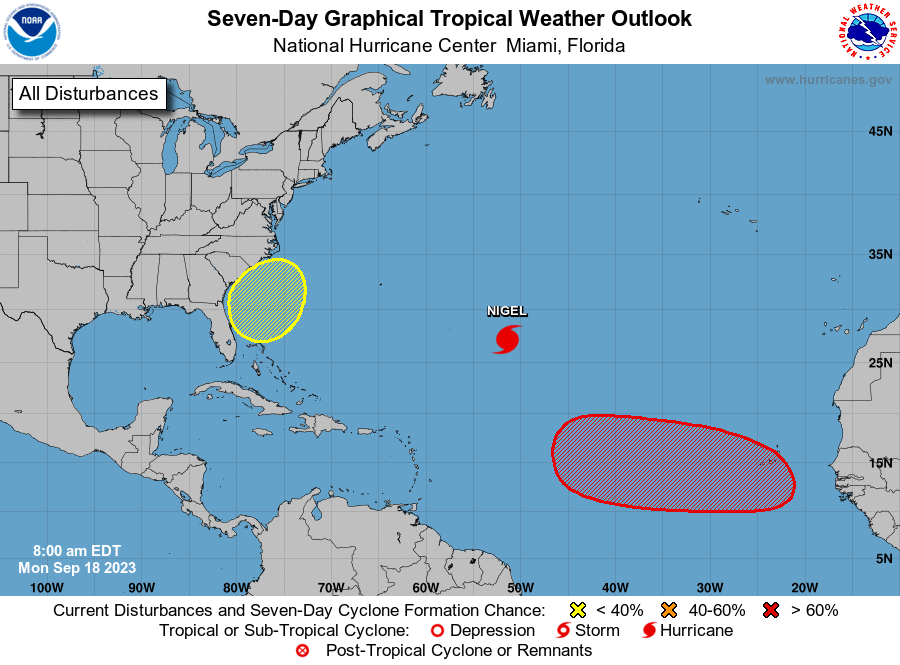
Hurricanes are getting stronger. Here’s why
Monday 18 September 2023 18:00 , Ariana Baio
As the global average temperature increases and sea levels rise, tropical cyclones - the catch-all term for hurricanes and typhoons - are expected to become stronger and the damage more catastrophic, scientists say.
Ethan Freedman and Louise Boyle report:
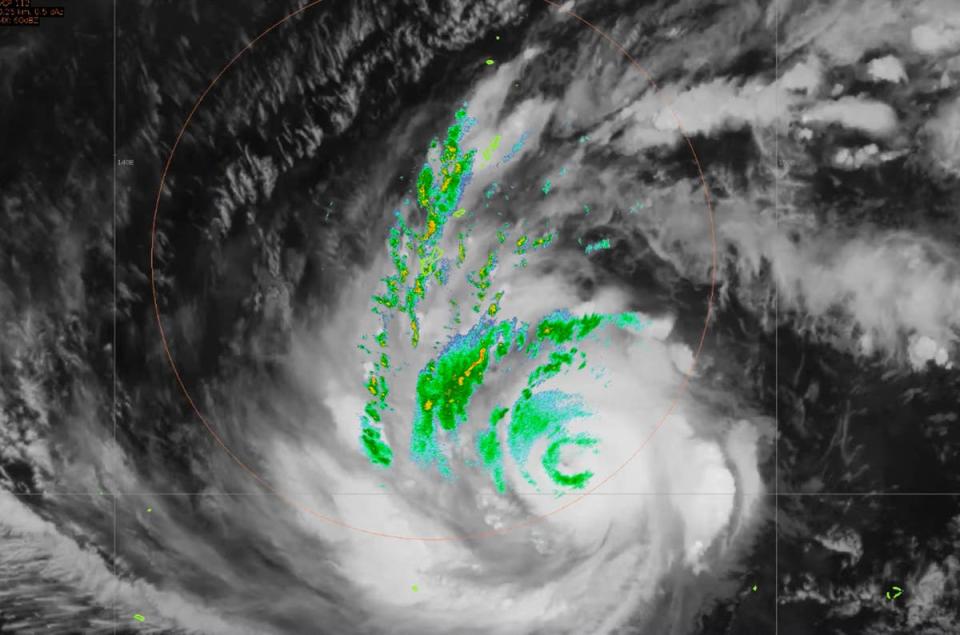
Hurricanes are getting stronger. Here’s why
National Hurricane Center says no warnings in effect
Monday 18 September 2023 18:40 , Ariana Baio
In their latest update on Hurricane Nigel, the National Hurricane Center (NHC) said the location of the storm does not affect land.
As of 11am ET on Monday, there are no coastal watches or warnings in effect regarding Hurricane Nigel.
Though it is currently a Category 1 and expected to rapidly intensify, the storm’s expect path is to remain in the middle of the Atlantic Ocean.
Watch: Timelapse of Nigel going from tropical depression to hurricane
Monday 18 September 2023 19:15 , Ariana Baio
Nigel evolved from a depression into a tropical storm over the weekend, and then recently into a hurricane last night.
This timelapse of Nigel from Saturday night through this morning shows that process taking place. pic.twitter.com/oNm4dHWAhq— CIRA (@CIRA_CSU) September 18, 2023
Why destructive hurricanes often start with the letter ‘I’
Monday 18 September 2023 20:00 , Ariana Baio
The World Meteorological Organization (WMO) issues alphabetical lists of names to label hurricanes each year - one for each of the world’s three oceanic regions.
Faiza Saqib reports:
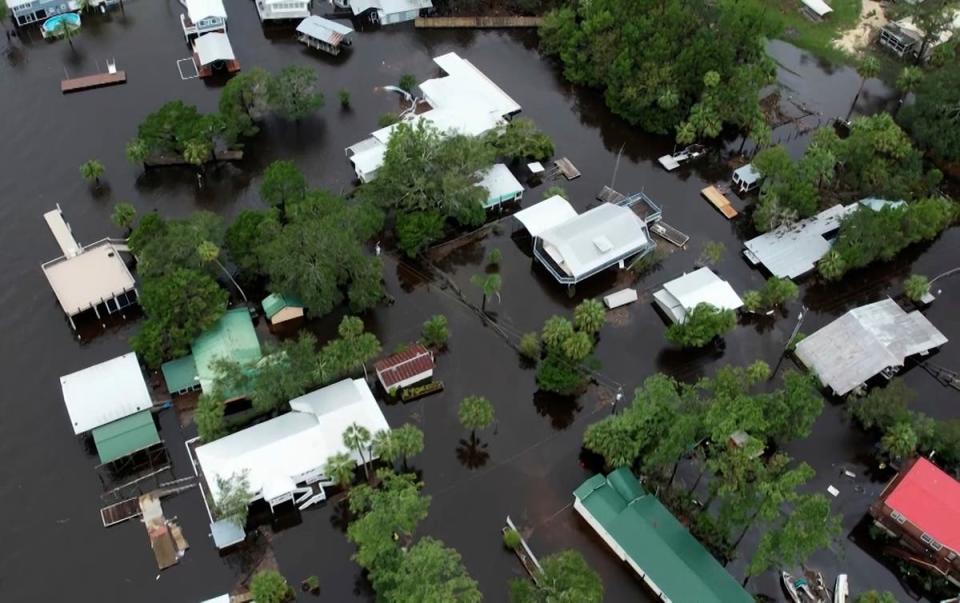
Why destructive hurricanes like Idalia often start with the letter ‘I’
How are hurricanes classified?
Monday 18 September 2023 21:00 , Ariana Baio
When a tropical depression reaches sustained winds between 74 and 95 miles per hour it is officially classified as a Category 1 hurricane on the Saffir-Simpson Hurricane Wind Scale.
After that, hurricanes can reach up to a Category 5 depending on its sustained winds, according to the National Hurricane Center.
Category 1 – Winds of 74 to 95 mph. “Very dangerous winds will produce some damage.”
Category 2 – Winds of 96 to 110 mph. “Extremely dangerous winds will cause extensive damage.”
Category 3 – Winds of 111 to 129 mph. “Devastating damage with occur.”
Category 4 – Winds of 130 to 156 mph. “Catastrophic damage will occur.”
Category 5 – Winds of 157 mph or higher. “Catastrophic damage will occur.”
Hurricane Nigel may weaken on Wednesday
Monday 18 September 2023 22:00 , Ariana Baio
The National Hurricane Center predicted Hurricane Nigel to potentially weaken after becoming a major hurricane on Wednesday.
“Nigel is forecast to rapidly strengthen into a major hurricane on Tuesday,” the NHC wrote in an advisory on Monday afternoon.
They added: “A gradual weakening trend could start on Wednesday.”
Hurricane Nigel approximately 800 miles from Bermuda
Monday 18 September 2023 23:00 , Ariana Baio
Hurricane Nigel is currently picking up speeds in the middle of the Atlantic Ocean.
As of Monday afternoon, the storm is about 810 miles from Bermuda, the National Hurricane Center said.
With sustained winds of 80 mph, Nigel is a Category 1 hurricane – though it is expected to rapidly intensify to a Category 3 by Tuesday.
No warnings or watches have been issued as of Monday afternoon.
Where did Hurricane Lee end up?
01:00 , Ariana Baio
On Saturday, the storm was downgraded from a hurricane to a post-tropical cyclone.
Kelly Rissman reports:

Hurricane wind speed possibility
03:00 , Ariana Baio
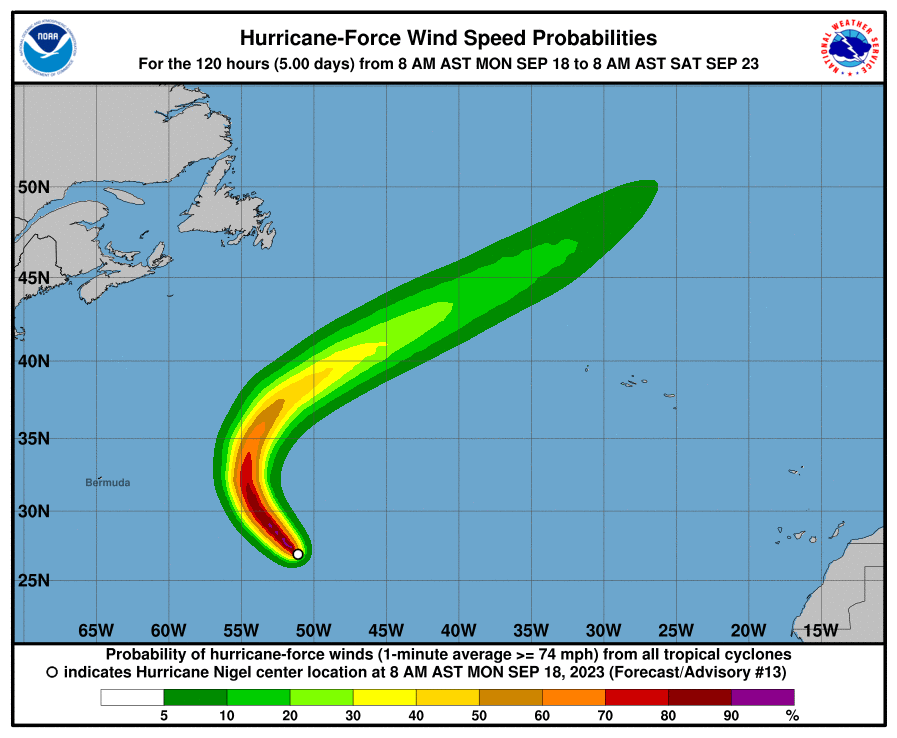
Hurricane Nigel has ‘somewhat ragged-looking eye'
05:00 , Ariana Baio
The National Hurricane Center (NHC) described Hurricane Nigel as having a “somewhat ragged-looking eye” as of Monday afternoon.
“Nigel is exhibiting a somewhat ragged-looking eye on satellite imagery, surrounded by bands of very deep convection with cloud tops to -80 deg C. High-level outflow has become a bit restricted over the northeastern quadrant of the circulation, but overall the system continues to become better organized. “
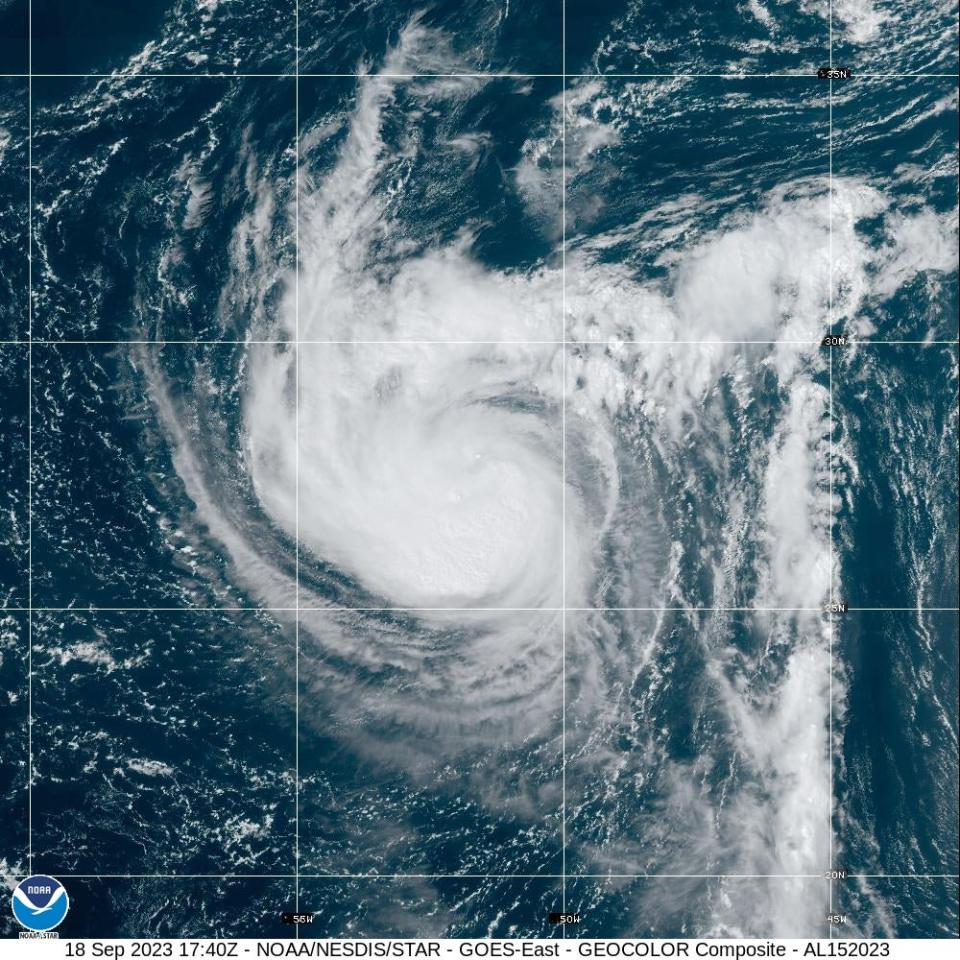
Hurricane Nigel strengthens slightly
07:00 , Stuti Mishra
Tropical Storm Nigel, a Category 1 storm has strengthened slightly in the last few hours, the National Hurricane Center said in its latest advisory.
The storm is still packing maximum sustained winds of 85mph but it was expected to strengthen further on Tuesday before it starts to weaken on Wednesday.
Watch: Nigel to strengthen into Atlantic's next major hurricane
08:00 , Stuti Mishra
How do extreme weather fronts get named?
09:00 , Ariana Baio
The custom of naming weather fronts originated in the 1900s in tandem with the earliest days of radio enabling ship-to-shore telecommunication for the first time.
Originally only given female names in accordance with nautical tradition, the idea of personifying extreme weather events was to ensure they could be clearly distinguished from one another through a system that was easier to remember than serial numbering.
Meteorologists, coast guards and ships’ captains could relay information clearly without fear of misunderstanding.
Joe Sommerlad reports:
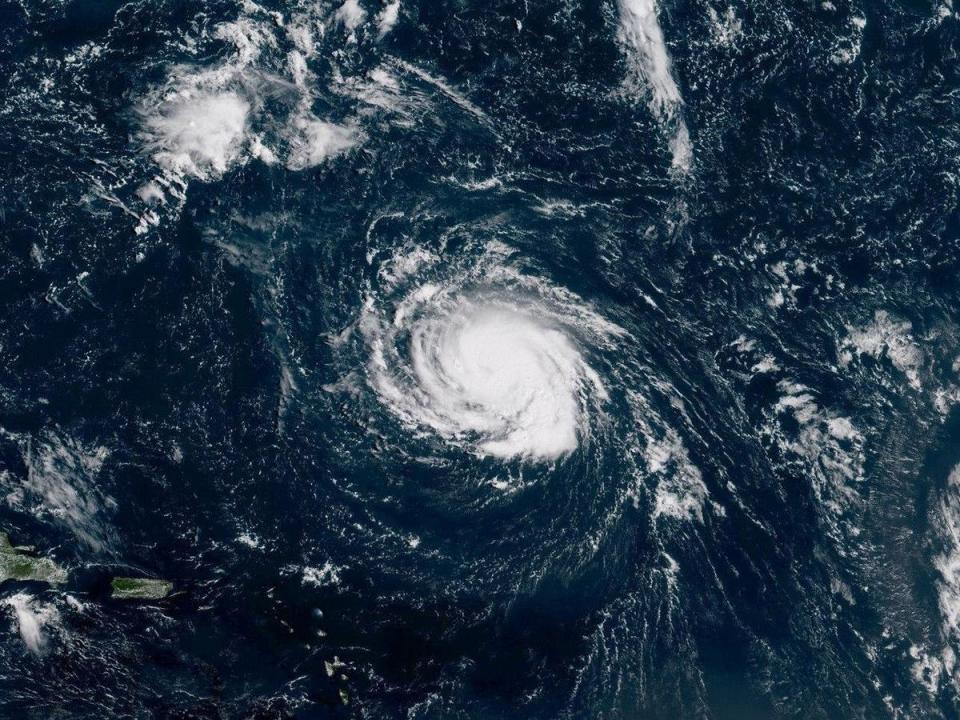
How do storms and hurricanes get their names?
Satellite footage shows Hurricane Nigel 'dancing about' in the open Atlantic
09:30 , Stuti Mishra
Spaghetti models show Hurricane Nigel veering right
10:00 , Stuti Mishra
Atlantic Hurricane #Nigel Track Forecasts (Mon 18 Sep 2023 1800 UTC): https://t.co/hT9xKi2R2a pic.twitter.com/y0B3B8fiu5
— Hurricane Models (@HurricaneModels) September 18, 2023
Hurricane Nigel tracker: What is the projected path of the storm?
10:30 , Stuti Mishra
The rapidly intensifying storm Nigel in the Atlantic has developed into a hurricane and could intensify further, according to the National Hurricane Center.
On Monday night, Hurricane Nigel was a Category 1 storm with sustained wind speeds of 85mph.
NHC said Nigel is a fast-spaced storm that is expected to rapidly intensify to a Category 3 major hurricane by Tuesday – this means it will have sustained winds of at least 111mph.
Here’s our Hurricane Nigel tracker:
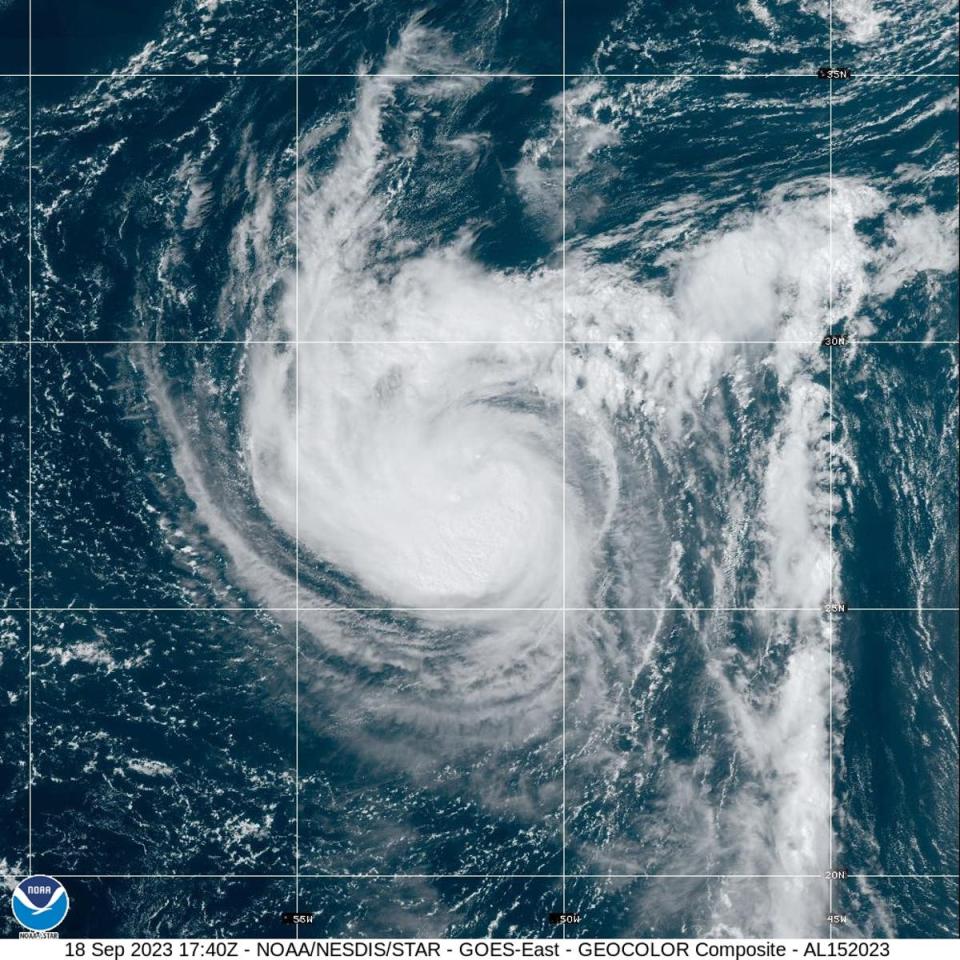
Hurricane Nigel tracker: What is the projected path of the storm?
Hurricane Nigel intensification ‘disrupted’
13:00 , Ariana Baio
The National Hurricane Center (NHC) said that Hurricane Nigel’s intensification has been seemingly disrupted, possibly by dry air.
“Despite seemingly conducive environmental conditions for strengthening, Nigel’s intensification appears to have been disrupted, possibly by dry air entrainment related to some mid-level shear,” the NHC wrote in an update on Monday afternoon.
The NHC has indicated Nigel’s “peak” to major hurricane status may still arrive within 36 to 48 hours – slightly lower than previous estimates of 24 – 36 hours.
How Americans are experiencing the climate crisis across the US
14:00 , Stuti Mishra
From hurricanes and deadly heatwaves to droughts and floods, the climate crisis is unfolding in myriad expected - and unexpected - ways for regular Americans.
Louise Boyle reports:

In their own words, how Americans are experiencing the climate crisis


